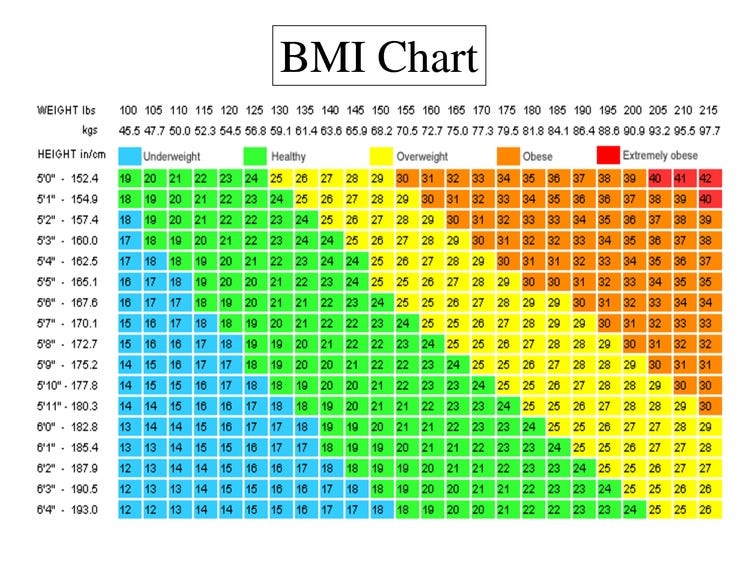
BMI: How It Relates To Women's Health
What is BMI?
BMI means Body Mass Index; it is a tool use by researchers to track obesity and other related ailment in the level population. Doctors and medical practitioners also use it to assess people's health.
There have been serious concerns by the medical community over using BMI as a measurement of obesity. And health due to its significant limitations, particularly in assessing the health of black and Hispanic people amongst other populations.
Howbeit, it is also recommended by some health organizations that people stay within a certain BMI range for some medical conditions.
BMI doesn’t take body fat or lean body mass into account. It also doesn’t consider where fat is store in the body. Because of these issues, it may provide misleading health information for some people.
BMI has significant flaws. However, it is a great tool for researchers and medical practitioners in combination with other measures of health to assess one's health.
What is healthy BMI for women?
Also, know that BMI has no distinction for either men or women. It's a simple formula that uses height and weight to calculate a number meant to represent a person's body fat levels. It measures weight and height of the man or the woman.
These are the numbers:
BMI range Classification
Less than 16.5 severe underweight
Less than 18.5 underweight
18.5 - 24.9 normal weight
25.0 - 29.9 overweight
30.0 - 34.9 obesity class I
35.0 - 39.9 obesity class II
40 or greater obesity class III
Benefits of BMI
Despite its shortcomings, BMI is one of the most effective, easiest, and cheapest ways for researchers to track obesity at the population level, which is very important for medical research. In a layman's understanding, he or she could define BMI as the tool used to calculate the mass of the body.
A high BMI means high body fat levels, Researchers have shown that BMI can be an accurate way to determine diseases and ascertain one's health status.
It's also used to determine mortality risk in individuals.
People whose BMI has shown them as having obesity, have been shown to be at significant risk of early death and developing chronic diseases, including heart disease and kidney disease, then people within the normal BMI range. People whose BMI classifies them as underweight are also more at risk of early death and developing the disease. Even though people are advise not to view BMI as a reliable source to ascertain one's health. Medical professionals use BMI in combination with other diagnostic tools to assess a person's health and monitor their risk of disease. Other tools include waist circumference and laboratory values such as cholesterol levels.
Is BMI different for men and women?
Overall, male and female body mass index charts are different in the BMI figures. Men tend to have higher figures than women, while women are allow to have slightly fatter.
That said, the methods for calculating ideal body weight and BMI is relatively the same for both genders. Although the numbers used are different.
Since BMI is useful for predicting your ideal healthy weight. It has shortcomings and it's not meant to be entirely accurate. Since it does not take into consideration your overall body composition.
Anyone regardless of their gender, who has more muscle than fat can have the same BMI as someone who is overweight. BMI is not 100% accurate or effective. Your mass to weight calculator is another important aspect of your BMI, it's an integral part of your BMI calculation.
How to measure weight
Not only weight but even height must also be a measure to calculate BMI. It is most accurate to measure weight in kilograms and height in meters. Howbeit, the BMI formula has been adopting for height measured in inches and weight measured in pounds.
These measurements can be take in the medical practitioner’s office or any health care personnel's office. You can as well take it at home using a tape measure and scale.
Using your height and the average weight for women will definitely show you your BMI.
White, Black and Hispanic women
BMI does not inherently distinguish between people of different genetic backgrounds. However, as this article will discuss later, different BMI cutoffs have been develope for Asian and South Asian populations. White, Black, and Hispanic women have been known to be at a "healthy weight" when their BMI lies between 18.5 and 24.9. Kindly note that women differ in body shape and composition.
Research shows that Mexican American women tend to have a different body fat distribution than white or Black women.
Additionally, Black women tend to have a higher amount of muscle mass than white or Mexican American women. On average, Mexican American women have more body mass in their abdomen.
One review found that Mexican American women may have 3–5% more body fat and a larger waist circumference than white or Black women with similar BMI.
Asian and South Asian women
Research shows that Asian and South Asian populations have more body fat relative to their body weight than white populations and that health conditions like type 2 diabetes occur at lower BMI levels in Asian populations than in white populations. This has led to changes in BMI cutoffs for Asian populations. Asian and South Asian women are in the overweight category when their BMI is 23–27.5 and are considering to have obesity when their BMI is over 27.
Bodybuilders and athletes
Sometimes the BMI system often classifies women with a significant amount of muscle mass as having overweight or obese, even though their body fat levels are low.
It's a misclassification and misrepresentation of the system, that's why the BMI system is not very efficient.
They also include bodybuilders and professional athletes in this category.
Postmenopausal women
It has been researched that older women tend to have a lower muscle mass and more fat located in their midsection than younger women. You must have the right knowledge of all these before you calculate your BMI. This is due to age-related changes, which have altered some formations and structures in the body, changes in hormone levels, slowing of physical activities, and changes in torso length due to osteoporosis.
#whatisahealthybmiforwomen #howtomeasureweight #measureweight #masstoweightcalculator
- Comments (0)
- Recommended
- Milestones
Here are your recommended items...
Here are your milestones...



